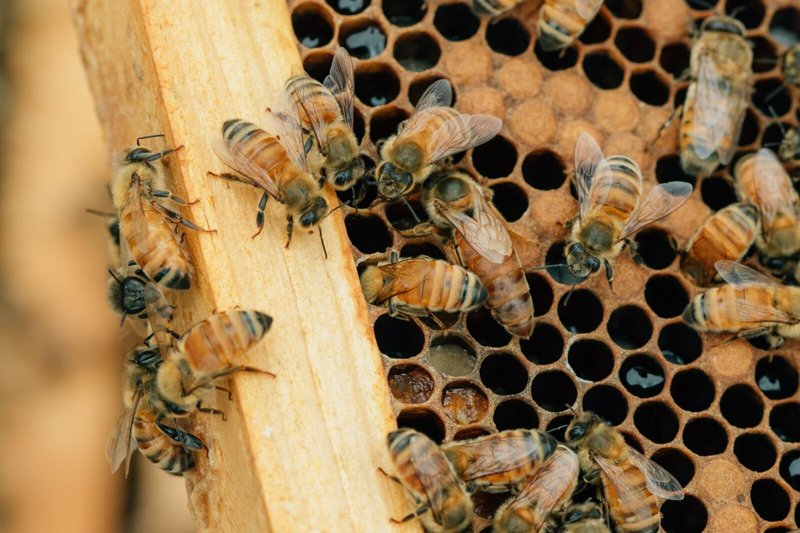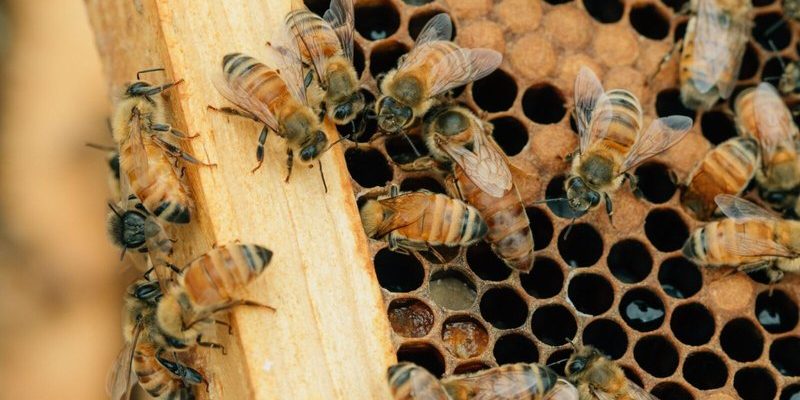
Pollination is the star of the show when it comes to honey bees, but they have other roles that might surprise you. These workers are busy little bees, performing various tasks within their hives and beyond. From maintaining the health of their colonies to having complex social structures, honey bees are endlessly fascinating. Let’s explore the critical jobs they do, which not only benefit the bees themselves but also us humans and the planet as a whole.
The Role of Pollination
Pollination is vital for many plants, and honey bees are among the best pollinators in nature. When bees visit flowers to gather nectar, they also brush against the flower’s reproductive parts, transferring pollen as they move. “Here’s the thing,” this process is essential for plants to produce fruits and seeds. Without pollinators like bees, many plants would struggle to reproduce, and our food systems would be in serious trouble.
Did you know that honey bees are responsible for pollinating about one-third of the food we eat? Fruits like apples, almonds, and blueberries rely heavily on these buzzing bees for successful pollination. In addition to fruits, honey bees also play a role in pollinating vegetables and nuts, making them crucial for a diverse diet. Without them, our grocery lists would look quite different!
Pollination doesn’t just help humans; it also supports entire ecosystems. Many wild plants depend on honey bee pollination to thrive. This, in turn, provides habitat and food for countless other creatures, from birds to insects. So, every time you enjoy a delicious apple, you can thank honey bees for their hard work in the background.
The Hives and Their Structure
Honey bees live in complex societies, often referred to as colonies or hives. Each hive has a unique structure, which helps the bees effectively manage their various roles. The hive is divided into three main types of bees: the queen, the workers, and the drones. Let me explain this a bit more.
The queen bee is the heart of the hive. She’s the lone female responsible for laying eggs and ensuring the colony’s continuity. Her main job is to keep the hive thriving and populated. Worker bees, on the other hand, are all female. They perform a myriad of tasks, including foraging for food, caring for the young, and maintaining the hive’s cleanliness. Then you have the drones, the males of the group. Their primary job is to mate with the queen to ensure new queens are produced.
This division of labor is like a well-oiled machine. Workers communicate with each other through dances and pheromones, ensuring that everyone knows what needs to be done. It’s a fascinating system that keeps the hive functioning smoothly and helps them adapt to challenges, like food shortages or threats from predators.
Honey Production
Now let’s get to the sweet stuff: honey production. Honey bees gather nectar from flowers and transform it into honey through a process called enzymatic digestion. When a bee collects nectar, it stores it in a special stomach called the “honey stomach.” Once back at the hive, they regurgitate the nectar, passing it to other worker bees who continue to process it.
Here’s a fun fact: it takes about 2 million flowers to produce a single pound of honey! Once the honey is ready, bees store it in hexagon-shaped cells made of beeswax, which they produce themselves. This serves as their food source, especially during winter when flowers are scarce. Honey is not only their food but also a significant energy source for the colony.
You might be wondering why we love honey so much. It’s not just the taste; honey has antibacterial properties and is full of antioxidants. Plus, it’s a natural energy booster. So, when bees are busy producing honey, they’re also making a delicious and healthy treat for us humans!
Beeswax and Other Hive Products
Honey bees are multitaskers, and their contributions go beyond honey. One of their most notable by-products is beeswax, which they produce to build honeycomb. Beeswax is secreted by worker bees and used to create the hexagonal cells that store honey and pollen and house their larvae.
Beeswax has many uses, from making candles to cosmetics and even food wraps. It’s a natural, biodegradable product that many prefer over synthetic alternatives. Plus, the process of collecting beeswax doesn’t harm the bees, making it an eco-friendly option.
Another by-product is propolis, a resinous material that bees collect from tree buds and sap. They use it to seal gaps in the hive and protect against bacteria and fungi. Propolis has antimicrobial properties, making it useful in natural remedies and supplements, reinforcing the idea that honey bees provide us with more than just sweet treats.
Bee Communication
Ever seen a bee dance? It might sound strange, but bees communicate through various movements known as the “waggle dance.” This is how they share information about food sources. When a worker bee discovers a rich source of nectar, she returns to the hive and performs a dance to inform others of the direction and distance to the flowers.
Here’s the thing: the waggle dance includes specific movements and sounds that tell fellow bees exactly where to find food. This efficient way of sharing information is crucial for the survival of the colony.
In addition to dances, bees also communicate through pheromones. These chemical signals can indicate danger, alert fellow bees about the queen’s presence, or even mark a path to food. This sophisticated communication system allows bees to work together effectively, ensuring that the hive remains strong and productive.
The Impact of Environmental Changes
Despite their importance, honey bees face numerous challenges, and environmental changes play a big role. Factors like habitat loss, pesticide use, and climate change significantly impact their populations. Loss of wildflower meadows and gardens means less food for pollinators, putting their survival at risk.
Pesticides can be particularly harmful. They not only kill bees directly but can also disrupt their navigation and communication systems. This makes it difficult for bees to find their way back to the hive or locate food sources.
That’s why it’s essential to advocate for bee-friendly practices, like planting native wildflowers and avoiding harmful chemicals in gardens. Every little bit helps to create a safer environment for these vital creatures.
Honey bees are crucial to our ecosystem, playing multiple roles that support not just their colonies but the entire planet. From pollination to honey production, and even their unique communication methods, these little creatures are true wonders of nature. To put it simply, without honey bees, our world would look quite different.
So, the next time you enjoy a delicious meal or a cup of tea with honey, take a moment to appreciate the hardworking honey bees that made it all possible. By understanding and supporting their role, we contribute to a healthier planet for all. As we work towards protecting these incredible insects, we’re not just helping them—we’re helping ourselves, too. Let’s keep the buzz alive!

